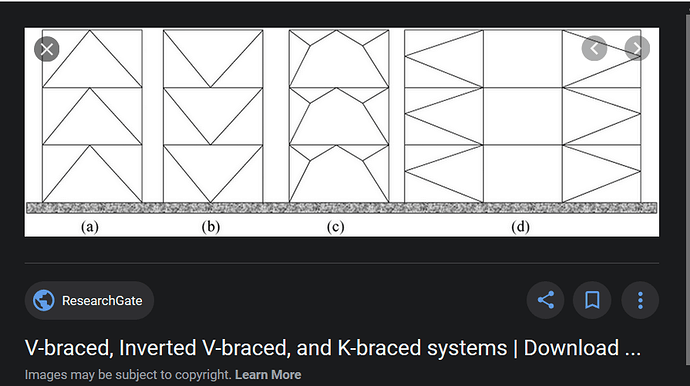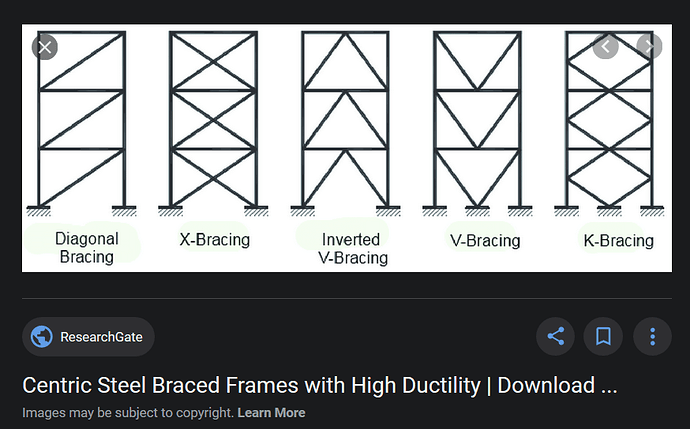QUESTION
I have a one-story structure with stacked X-bracing same as the referenced thread above. I am not understanding how it is not a K-brace. The definition from AISC Seismic Design Manual (5.2) states: where a brace frames to a column at a location where there is no out-of-plane support. Is it a K-brace condition?
REPLIES
EDub24
I don’t think so. A K-brace is a problem because the horizontal component of the brace goes directly into the column creating a bending moment. In a stacked X-frame the horizontal component goes to the brace below which basically provides the out-of-plane support.
SOURCE
https://www.eng-tips.com/viewthread.cfm?qid=447535
Above is a snippet.
It depends on how you define a K-brace. Several types of braces are shown here. Type (d) is said to be a K-brace. If bracing members canresist both tension and compression, the horizontal component does not go into the column, so no bending moment is created in the column.
If, on the other hand, a K-brace is defined as shown in the rightmost sketch here, there may be a problem of column bending.
EDIT: No, I don’t think so. If all of the columns and beams are hinged at the brace points, the structure is still stable, so there is no horizontal component going into the column. But the columns are braced in a location where there is no out-of-plane support which puts it in violation of the AISC Design Manual stipulation. A stacked X-brace is not limited in that way which means it is not equivalent to a K-brace.
EDIT #2:
I am probably the last person who should be talking about seismic provisions as Alberta is a province where seismic activity is almost non-existent. But the following quotation comes from ANSI/AISC 341-16. The concern seems to be performance after buckling of compression braces.
“Seismic Provisions for Structural Steel Buildings, July 12, 2016American Institute of Steel Construction9.1-2534b.K-Braced FramesK-bracing can have very poor post-elastic performance. After brace buckling, the action of the brace in tension induces large flexural forces on the column, possibly leading to buckling. No adequate design procedures addressing the high-consequence stability issues are available.”

